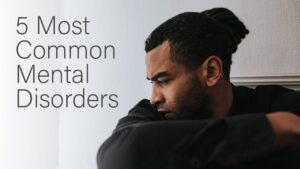Drug use can cause a variety of problems, from depression to anxiety. Depression causes feelings of intense sadness and loss of interest in activities. People who are depressed are often unable to function properly in work, school, or personal relationships. Anxiety, on the other hand, is the feeling of persistent or excessive worry, usually out of proportion to the actual danger. Although most people don’t think of drugs as a cause of their problems, abuse can lead to these mental health conditions.
Symptoms of drug-induced anxiety disorder
If you’re experiencing a high level of anxiety, substance-induced anxiety may be a sign that you’re addicted to the substance. The symptoms may subside quickly after abstaining from the substance for a few days, but if you continue to feel this way after stopping, you may be suffering from a drug addiction. Fortunately, there are ways to address the symptoms and find the best solution for your condition.
The first step is to differentiate drug-induced anxiety disorder from anxiety caused by a general medical condition. Because some conditions are accompanied by anxiety symptoms, they can be difficult to differentiate. In these cases, the disorder should be diagnosed and treated as a medical condition. Drug-induced anxiety disorder must be differentiated from other mental conditions that cause the same symptoms, such as primary psychotic disorders and delirium. In addition, a person’s symptoms may be caused by substance intoxication or withdrawal.
In addition to substances such as alcohol, stimulants such as cocaine and amphetamines can trigger anxiety symptoms. These drugs can increase heart rate and cause paranoia, which worsens the condition. According to the Anxiety and Depression Association of America, an estimated one in eight visits to the emergency room are caused by substance abuse. This number includes 26.1 percent of visits to emergency rooms related to anxiety disorders.
Those who suffer from drug-induced anxiety disorder are at high risk for serious illness. The symptoms may appear during drug intoxication, or may begin several days after stopping use. Moreover, a person with substance-induced anxiety disorder may also exhibit symptoms of obsessive-compulsive disorder, including generalized anxiety, panic attacks, and phobia manifestations. The symptoms of substance-induced anxiety disorder may last for more than a month after cessation of use.
A person with substance-induced anxiety disorder is often unaware of their condition. There’s no concrete evidence that they’ve suffered from anxiety prior to using substances. The symptoms of substance-induced anxiety disorder must cause significant mental distress and interfere with their life. But if you think about it, this condition isn’t as common as you might think. In fact, benzodiazepines are only one of several chemical substances that may induce anxiety.
Symptoms of drug-induced psychosis
Drug-induced psychosis is a form of severe mental illness that is characterized by total withdrawal from society and disconnection from others. This form of psychosis is more severe than most other forms, and treatment focuses on the individual recovering from drug abuse or dependency. Some individuals experience both drug psychosis and depression, and the treatments for these conditions are not always the same. Fortunately, there are some ways to recognize drug psychosis and recovery.
The initial symptoms of drug-induced psychosis include social withdrawal, lack of motivation, hallucinations, and delusions. If drug-induced psychosis is diagnosed early, anti-psychotic medications and antidepressants may be prescribed. If the symptoms persist, however, a psychotic episode may require medical intervention. It’s important to work closely with a psychiatrist in order to prevent the psychosis from worsening.
While many drugs can produce these symptoms, stimulant drugs are the most common cause. These drugs can cause bipolar disorder, schizophrenia, and manic episodes. These drugs also cause chemical imbalances in the brain. However, not all drugs can induce psychosis. There are many other diseases and conditions that can lead to drug-induced psychosis. However, most people who develop drug-induced psychosis are drug users who experience an addiction to alcohol.
Symptoms of drug-induced psychosus may include delusions, hallucinations, and excessively aggressive behaviors. These symptoms can be difficult to distinguish from other types of psychosis. However, drug-induced psychosis is very dangerous and requires medical attention. If you experience any of these symptoms, seek medical attention right away. You can also cause further damage to yourself or others. For those suffering from this condition, it is important to know the warning signs and how to recognize drug-induced psychosis.
Hallucinations are a common sign of psychosis. These symptoms can range from seeing or hearing things that do not exist to hearing voices or smelling smells that others cannot detect. Other signs of psychosis include aggressive or violent behavior, and an appearance of being disconnected from reality. Individuals suffering from psychosis may be paranoid or aggressive and may resist medical care. The most common sign of drug-induced psychosis is the onset of delusions or hallucinations.
Symptoms of drug-induced delusions
People who abuse drugs are prone to hallucinations and delusions. These experiences affect all of the human senses, including hearing and seeing. Substance users may believe things that aren’t true or that others are delusional. They may even be persecuted by their own delusions. Here are some of the symptoms of drug-induced delusions. These symptoms can be frightening and may lead to dangerous behavior.
The symptoms of drug-induced psychosis vary from person to person. However, some people are predisposed to drug-induced psychosis, and they may experience this mental disorder even after the drug has cleared from their system. Drug-induced psychosis can exacerbate existing mental illnesses, including schizophrenia. The use of psychoactive substances for a long time can lead to persistent psychotic symptoms that can be difficult to distinguish from those of other psychiatric disorders.
Substance-induced psychosis is a type of psychosis brought on by the abuse of alcohol or other drugs. It can be temporary, or it can be lifelong. A person who suffers from drug-induced psychosis will lose touch with reality and struggle to separate the real from the unreal. There are several symptoms of drug-induced psychosis that can range from mild to severe.
Some people who have these symptoms should contact their doctor immediately. If the symptoms are mild, a doctor will be able to evaluate them and refer them for further treatment. In more severe cases, a person may need to undergo a detoxification program. If the symptoms are severe, a hospital stay in a psychiatric inpatient unit may be necessary. Antipsychotic medications may be prescribed, as well as individual therapy.
Some of the symptoms of drug-induced psychosis include hallucinations and delusions. Hallucinations are sensory perceptions of things that aren’t real. These experiences can include hearing voices or seeing things that others don’t see or smell. Those experiencing psychosis may appear aggressive or paranoid. These symptoms may also persist despite attempts to obtain evidence of a psychotic condition.
Treatment options
There are many different types of treatment for mental health problems caused by drug or alcohol use. These treatments can range from behavioral therapy to medication to lifestyle changes. In addition, you may find support groups to assist you in maintaining sobriety. Treatment for mental illness is important, as it can help you avoid relapse and improve your overall quality of life. Here are some of the more common treatments for mental health disorders caused by drug and alcohol use.
Psychological treatments may include pharmacological or psycho-educational therapies. Psychotherapy is usually the first course of treatment, though medication can be an important part of treatment. Medication helps reestablish normal brain function, which reduces cravings. Medication for alcohol and tobacco addiction is available, as are several forms of counseling. For stimulant addiction, like cocaine or methamphetamine, you may need a combination of different therapies.
Partial hospitalization is another option for people experiencing serious mental health symptoms but who are not dangerous to themselves. Some individuals transition from inpatient programs to partial hospitalization, in which they receive intensive treatment during the day and go home at night. As with any mental health treatment, aftercare is essential. Medication, counseling, and case management may be part of your aftercare plan. A comprehensive aftercare plan is important when transitioning from intensive care to home-based treatment.
Among the many available drugs, antidepressants and mood stabilizers are the most common ones used to treat mental disorders. They can also be used to treat attention-deficit hyperactivity disorder and sleep problems. The most common antidepressants are selective serotonin reuptake inhibitors (SSRIs) such as fluoxetine. There are also anti-seizure drugs, such as gabapentin, that are often prescribed for anxiety-related disorders.
Bipolar disorder can result in serious problems. Symptoms of bipolar I and bipolar II include extreme mania or hypomania and an inability to function normally. Treatment for anxiety disorders can include behavior aimed at avoiding situations that trigger the disorder. Obsessive-compulsive disorders involve repetitive thoughts, actions, and habits related to avoiding danger. Other types of disorder involve obsessional thinking and preoccupation. Examples of these conditions are hair pulling and hoarding.


